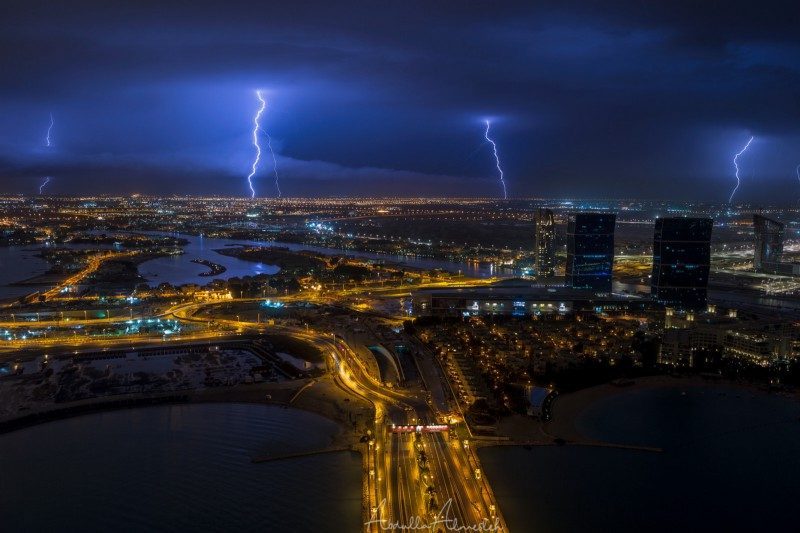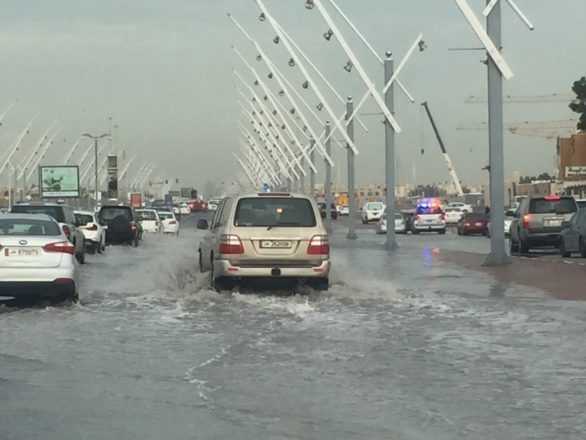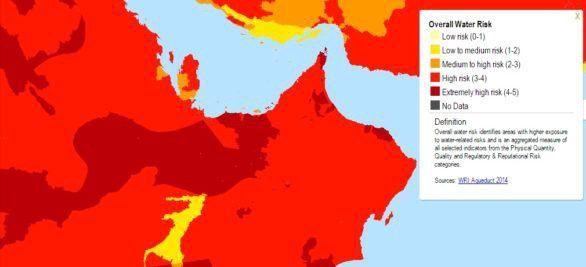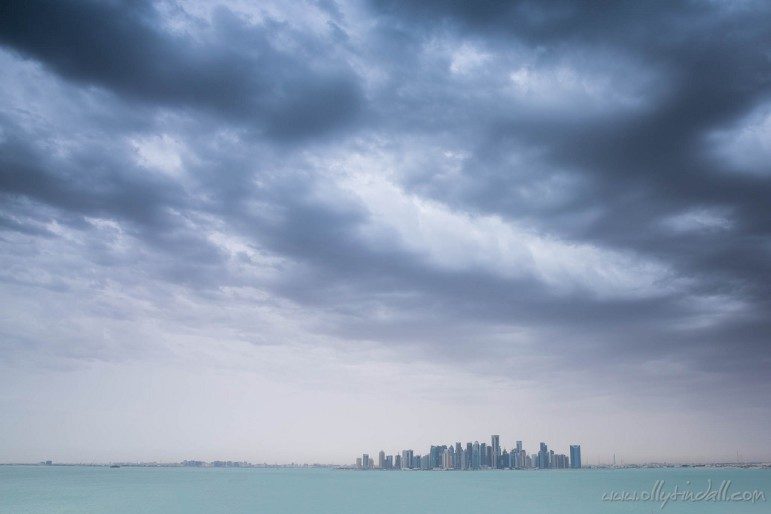
If the start of 2017 felt unusually rainy, that’s because it was.
The first quarter of this year saw the highest number of wet days in Qatar in at least 10 years, a local meteorologist told Doha News.
And according to a recent report, Qatar can expect to see more winter rain storms (as well as increase in summer sandstorms) in its future.

That said, the soggy weather is likely now behind us, as forecasters are expecting a relatively dry April.
More rain than average
But looking back, rain fell in Qatar on 29 days during the first three months of this year.
Over the past decade, the average has been about 11 days during this time period, Steff Gaulter, senior meteorologist at Al Jazeera English, told Doha News.

She added that one theory for the sudden increase in rainfall involves the movement of a line of rain that starts in Saudi Arabia.
She said it typically sits north of Qatar, but this band has slipped southwards for unknown reasons.
Wetter winters
This year, Qatar has been a number of storms, many of which have caused flash-flooding and resulted in waterlogged streets.
This could become the norm.

According to a report published last month by Emirates Wildlife Society and the World Wildlife Fund (WWF, wetter winters and dustier summers may become more common in the coming decades.
The UAE Climate Change Risks and Resilience study suggested that by 2050, climate change could raise air and sea temperatures in the Gulf, significantly affecting the population and the environment.
Along with the UAE, Qatar also faces the prospect of drier, dustier summers.

The report cited a previous Aqueduct Water Risk Atlas by the World Resources Institute that named Qatar one of the most water-stressed countries in the world.
It stated that while the region’s summer drought could get worse in the coming years, winters could bring more flash-floods.
This is related to a forecasted 2C increase in the temperature of the surface waters of the Arabian Gulf by 2050.
That jump could also be accompanied by more unpredictable weather, the report warned.
Cloud seeding
In a bid to counteract the dry spells and increase rainfall, the UAE is one several countries globally that has been cloud seeding in recent years.
The process is a way of trying to squeeze more moisture out of existing clouds, by firing salt flares into them to encourage precipitation.

Experts monitor weather patterns and when potentially suitable clouds are spotted, planes loaded with canisters of potassium chloride and sodium chloride fly into the clouds and release the particles.
Last month, the UAE’s National Center of Meteorology and Seismology said it had launched around such 20 flights in five days, The National reported.
However, it can be difficult to quantify how much extra rain these flights create.

Qatar has previously considered cloud-seeding. But it has not carried it out as it was considered “not feasible,” a local forecaster told Doha News.
Regional weather patterns mean that Qatar would most likely only benefit from a neighboring country’s cloud seeding if the operations took place in Saudi Arabia, he added.
Thoughts?






